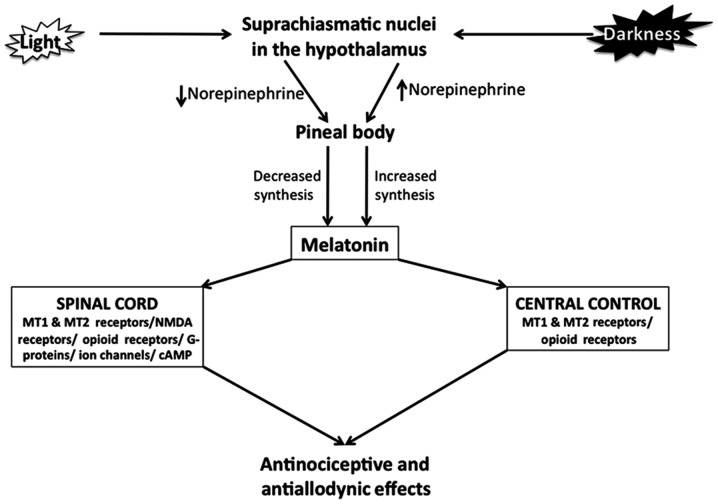Figure 2.
Control of melatonin synthesis in the pineal body by light-dark cycles and antinociceptive and antiallodynic effects of melatonin. Suprachiasmatic nucleus (SCN) in hypothalamus is composed of special ganglion cells containing a photo-pigment, known as melanopsin. During night-time, the release of norepinephrine from the postganglionic sympathetic fibers of SCN supplying to the pineal gland is elevated due to reduced electrical signal activity in SCN. Norepinephrine activates the β-adrenergic receptors present on the pinealocytes leading to melatonin biosynthesis. During daytime, norepinephrine release from the postganglionic sympathetic nerve fibers is suppressed because of elevated electrical signals in the SCN, thereby lowering the activation of melatonin synthesis and release in pinealocytes. Melatonin appears to act via its MT1/MT2 receptors in the spinal cord and in brain and by its interaction with other receptors such as opioid, substance P and NMDA.

